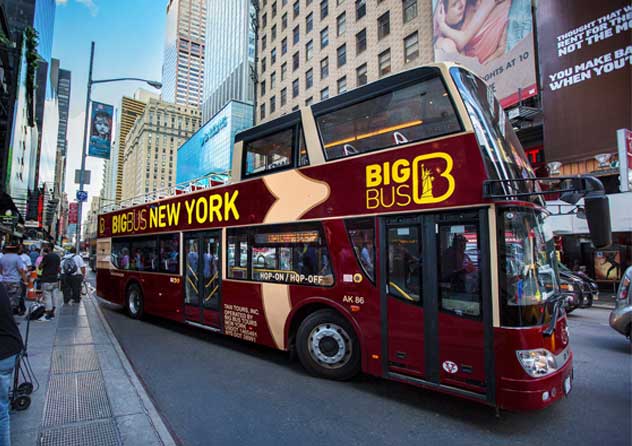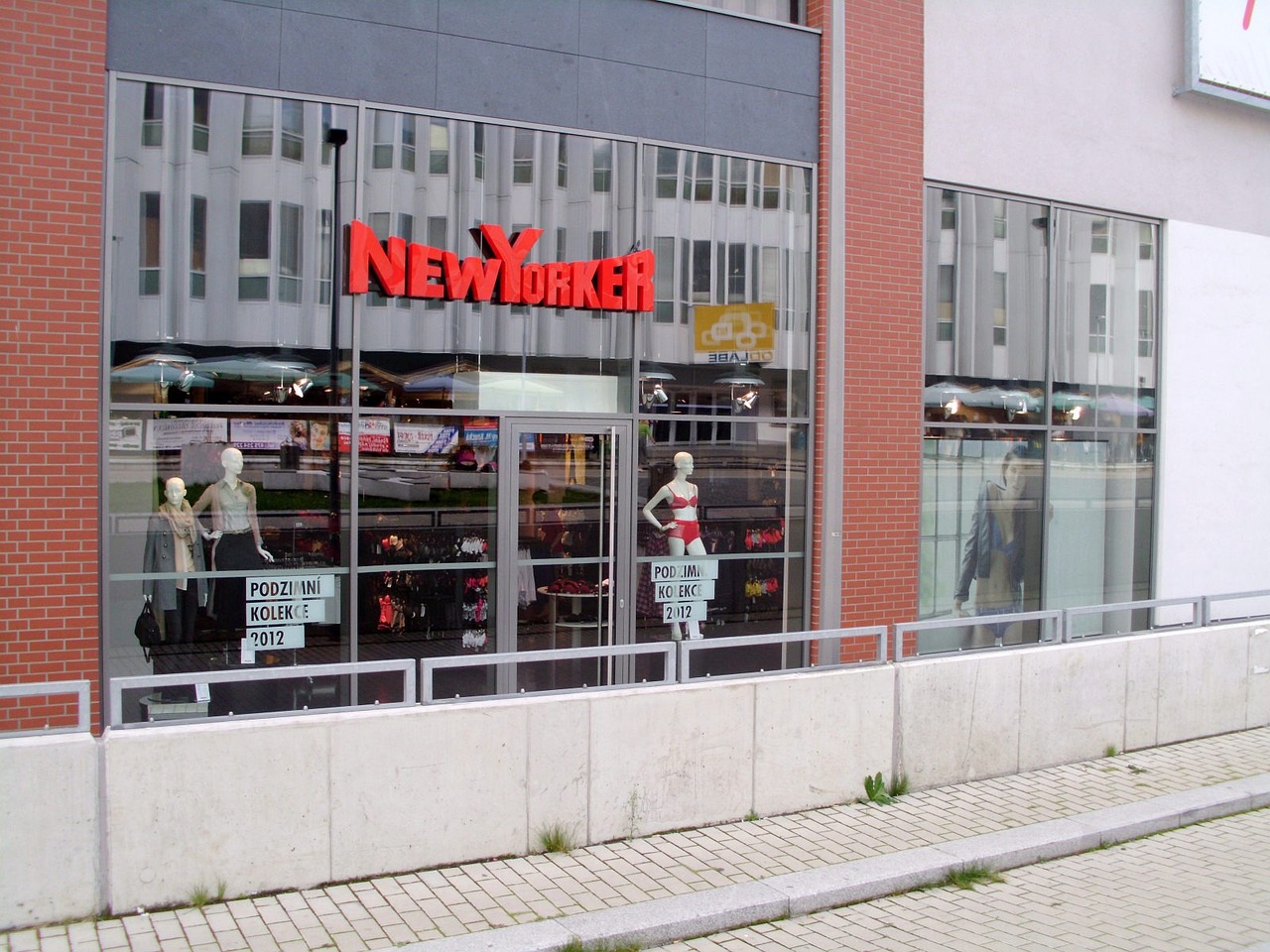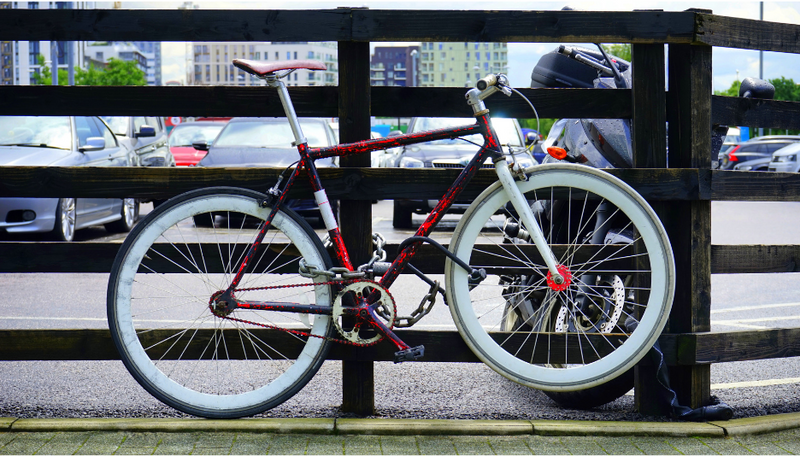Table of Contents
- Master the Subway System
- Get a MetroCard
- Download Transit Apps
- Plan Your Route
- Explore Bus Routes
- Bus Apps
- Embrace Walking and Biking
- Walking Distances
- Bike Lanes
- Carpool and Rideshare
- Carpooling
- Ridesharing
- Rush Hour
- Off-Peak Travel
- News and Apps
- MTA Alerts
- Mind Your Manners
- Stand Right
- Let Passengers Exit
- Keep the Volume Down
- Safety First
- Keep Valuables Secure
- Use Well-Lit Areas
- Know Emergency Exits
New York City, the city that never sleeps, is a bustling metropolis with a transportation system as dynamic as the city itself. Navigating the Big Apple’s labyrinth of streets and avenues can be an adventure in its own right and for many New Yorkers, commuting is a daily ritual. Whether you’re a seasoned resident or a recent transplant, these transportation tips will help you make the most of your commute in the city that’s always on the move.
New York City, often fondly called the “city that never sleeps,” is a sprawling urban jungle and its transportation system is the lifeblood that keeps it pulsing with energy 24/7. Navigating the labyrinth of streets, avenues and boroughs is a bit like embarking on an exciting adventure and for the millions of New Yorkers who call this metropolis home, commuting is a daily ritual. Whether you’re a seasoned city dweller or a recent transplant, mastering the art of commuting in the Big Apple is key to making the most of your time in this ever-moving city.
The Subway Symphony: The New York City subway system is iconic and efficient, but it can also be bewildering for newcomers. Invest in a MetroCard for easy access to subways and buses. Be sure to check the subway map, study the routes and familiarize yourself with express versus local trains. Rush hour can be a bit hectic, so consider traveling during off-peak times for a more comfortable ride.
Walking and Cycling: NYC is a highly walkable city and many residents rely on their own two feet as their primary mode of transportation. Invest in comfortable walking shoes and explore the neighborhoods on foot to truly soak in the city’s essence. If you prefer biking, Citi Bike stations are scattered throughout the city for convenient rentals.
Bus Adventures: Buses are a fantastic way to explore neighborhoods that may not be directly accessible by subway. Check bus routes and schedules in advance and don’t forget that you can pay for your bus ride with the same MetroCard used for the subway.
Taxis and Ride-Sharing: When you need to get somewhere quickly or have a lot to carry, taxis and ride-sharing services like Uber and Lyft are readily available. Just be prepared for the occasional traffic jam, especially during peak hours.
Ferries and Water Taxis: NYC’s waterways offer a unique and scenic way to get around. Consider taking a ferry or water taxi for a different perspective of the city. It’s an especially pleasant option during the warmer months.
Mind the Street Grid: New York City’s grid system is a blessing for navigation. Streets run east-west and avenues run north-south. Knowing the cross streets of your destination can help you find your way quickly.
Stay Informed: Stay updated on service changes, delays and weekend disruptions by checking the Metropolitan Transportation Authority (MTA) website or using subway apps like Citymapper or Transit. These resources provide real-time updates to help you plan your route.
Courtesy and Etiquette: NYC commuters are a diverse group and courtesy goes a long way. Stand to the right on escalators, allow passengers to exit the subway before boarding and offer your seat to those in need—these small gestures can make your commute more pleasant.
Plan Ahead: To avoid last-minute rushes and stress, plan your commute in advance. Consider alternate routes in case of unexpected delays and give yourself extra time if you have an important appointment or meeting.
Enjoy the Journey: While commuting may sometimes feel like a chore, remember that it’s also an opportunity to take in the city’s sights and sounds. People-watching, street performances and the occasional serendipitous encounter are part of what makes commuting in NYC an experience like no other.
In the end, mastering the art of commuting in the city that’s always on the move can transform your daily routine into an adventure. Embrace the energy of the Big Apple, explore its diverse neighborhoods and let the rhythm of the city guide you on your daily journey.
Looking for more insights? You’ll find them right here in our extended coverage: An EPIC Guide to 4 DAYS in NEW YORK CITY (+FREE Tips From …
Master the Subway System
The New York City subway system is the backbone of daily commuting for millions of residents. To make the most of it:
The New York City subway system is the backbone of daily commuting for millions of residents. To make the most of it:
Plan Your Route: Before you hop on the subway, plan your route using online apps or maps. Familiarize yourself with the subway lines, transfers and station names. Knowing your route in advance can save you time and reduce the stress of navigating the complex system.
MetroCard: Get yourself a MetroCard, which is the most convenient way to pay for subway rides. You can load it with credit and use it for both single rides and weekly/monthly passes, offering significant savings for regular commuters.
Timing Matters: Be mindful of the time you choose to ride the subway. Rush hours (typically 7-9 am and 4-6:30 pm on weekdays) can be extremely crowded, so if you can, try to travel during off-peak hours for a more comfortable experience.
Mind the Gaps: Pay attention to the platform edge and mind the gap between the platform and the train. While subway platforms are generally safe, it’s essential to be aware of your surroundings, especially during crowded times.
Stay Informed: Keep an eye on subway service alerts and updates, as the system occasionally experiences delays or service changes due to maintenance or incidents. Smartphone apps and the official MTA website provide real-time information to help you plan your journey.
Stand Clear of the Doors: When the subway arrives, allow exiting passengers to get off before you board. It’s a common courtesy that keeps the flow of passengers moving smoothly.
Personal Safety: Be aware of your surroundings and keep an eye on your belongings. While the subway is generally safe, it’s wise to exercise caution, especially during late-night travel.
Transfer Points: Some subway stations serve multiple lines and transferring between them can be a bit of a maze. Look for signs that indicate transfer points and follow them to your desired line.
Express vs. Local: Understand the difference between express and local trains. Express trains skip some stations to reach destinations faster, while local trains stop at every station along the route.
Courtesy Counts: Be considerate of other passengers. Give up your seat to those in need, keep your music at a reasonable volume and avoid taking up extra space during crowded rides.
Emergency Information: Familiarize yourself with emergency information and the location of emergency intercoms and exits in case you ever need assistance.
Explore the City: The subway system can take you to many famous attractions and neighborhoods in NYC. Use it as a starting point for exploring the city’s diverse culture, food and entertainment.
Navigating the New York City subway system can be an adventure in itself. With a little preparation and awareness, you can make your daily commute or tourist experience more efficient and enjoyable.
Additionally, you can find further information on this topic by visiting this page: The Secret to Mastering the New York City Subway System – Rachel …

Get a MetroCard
Invest in a MetroCard for easy access to the subway and buses. You can add value to it as needed or get an unlimited-ride card if you commute frequently.
Invest in a MetroCard for easy access to the subway and buses and you’ll find that it’s not just a ticket but your key to exploring the vast tapestry of New York City. The MetroCard is your passport to the city’s heartbeat, a gateway to its hidden gems and iconic landmarks.
With a MetroCard in hand, you’ll seamlessly navigate the city’s extensive public transportation system. The subway, a marvel of engineering, connects you to all five boroughs, whisking you from the heart of Manhattan to the colorful streets of Brooklyn, the cultural enclaves of Queens, the historic neighborhoods of the Bronx and the scenic landscapes of Staten Island. It’s a network that transcends time and space, a testament to the city’s ceaseless motion.
The MetroCard offers flexibility to suit your travel needs. If you’re a daily commuter, consider an unlimited-ride card. It grants you the freedom to hop on and off subway trains and buses as many times as you wish within a set time frame. It’s not just a practical choice; it’s a symbol of convenience and efficiency in a city that never sleeps.
For those who prefer occasional exploration, the pay-per-ride option allows you to load your MetroCard with a specific dollar amount. You can top it up as needed, ensuring that you always have easy access to the city’s public transit. It’s an economical choice that provides the freedom to customize your travel experience.
But the value of a MetroCard goes beyond convenience; it’s a ticket to adventure. With it, you can uncover the city’s hidden treasures, from the lively street performances of Times Square to the serenity of Central Park’s Ramble. You can hop on the subway and explore the culinary delights of different neighborhoods or embark on a cultural journey through the city’s museums and galleries.
In essence, a MetroCard is not just a piece of plastic; it’s your portal to the heart and soul of New York City. It’s your companion as you traverse the city’s vibrant neighborhoods, savor its diverse cuisine and immerse yourself in its rich history and culture. So, when you invest in a MetroCard, you’re not just buying a fare; you’re investing in unforgettable experiences and the boundless exploration of this captivating metropolis.
Should you desire more in-depth information, it’s available for your perusal on this page: Transportation – MOPD

Download Transit Apps
Download apps like “MTA Subway Time” and “Citymapper” to check real-time subway schedules, service updates and even find the best subway car to board.
Download apps like “MTA Subway Time” and “Citymapper” to check real-time subway schedules, service updates and even find the best subway car to board. These handy apps can transform your urban commuting experience, offering a wealth of information at your fingertips.
With “MTA Subway Time,” you can stay up to date with the latest subway arrivals and departures. No more standing on the platform, wondering when your train will arrive. You’ll know exactly when to expect it, reducing unnecessary wait times and ensuring you get to your destination on time.
“Citymapper” takes subway navigation to the next level. It not only provides real-time updates but also offers comprehensive transit options, including buses, ferries and even rideshares. You can plan your entire journey, from door to door, with multiple route choices, estimated travel times and live updates to account for any unexpected delays.
But these apps offer even more than just schedules. They can help you navigate the subway system more efficiently. For instance, “Citymapper” provides subway exit strategies, helping you choose the optimal subway car to be closest to your exit or transfer point. This small but highly practical feature can save you valuable time during your daily commute.
Moreover, both apps often incorporate service advisories, informing you of any planned maintenance or unexpected disruptions, allowing you to adjust your travel plans accordingly. This information is invaluable for avoiding unnecessary stress and ensuring a smoother commute.
In today’s fast-paced world, these apps are essential tools for anyone navigating the complex web of New York City’s subway system. They empower you to make informed decisions, minimize travel uncertainties and maximize your time in the city that never sleeps. So, take advantage of technology and make your subway rides more convenient and enjoyable with these indispensable apps.
Should you desire more in-depth information, it’s available for your perusal on this page: Moovit: All Transit Options on the App Store

Plan Your Route
Familiarize yourself with the subway map and plan your routes in advance. Learn about express vs. local trains and which lines connect to your destination.
Become a Subway Savvy New Yorker
Navigating the New York City subway system can initially seem daunting, but with a bit of practice and some insider knowledge, you can become a true subway pro:
1. Subway Map Mastery:
Start by familiarizing yourself with the subway map. It’s a colorful diagram that represents the complex network of subway lines that crisscross the city. Understanding the map is like deciphering a well-kept secret. Pay attention to:
Line Colors: Each subway line is color-coded, making it easy to identify and follow your route.
Stations: Identify the subway stations near your home, workplace and common destinations. This helps you plan your route effectively.
2. Plan Ahead:
Before embarking on your journey, plan your route in advance. Use apps like Google Maps, the official MTA Subway Time app or Citymapper to input your starting point and destination. These apps provide real-time information on subway schedules, service disruptions and alternative routes.
3. Understand Express vs. Local Trains:
New York City subway lines are typically divided into two types: express and local. Express trains make fewer stops, allowing for faster travel between boroughs, while local trains stop at every station along the route. To make the most of this:
Optimize Your Route: Depending on your destination, choose between express and local trains. Express trains are excellent for long journeys, while local trains are best for shorter distances with multiple stops.
Transfers: Be aware of transfer points where you can switch between express and local trains. This knowledge can save you time and make your commute more efficient.
4. Line Connections:
Understanding how different subway lines connect is essential for planning your routes effectively. Some tips:
Transfers: Learn about major transfer hubs like Times Square, Union Square and Fulton Center, where multiple subway lines intersect. These hubs offer convenient transfer options.
Alternative Lines: Familiarize yourself with alternative lines that can be used in case of service disruptions or delays on your regular route.
5. Express vs. Local Etiquette:
When on the platform, pay attention to signs indicating whether the approaching train is express or local. Position yourself accordingly on the platform. If you’re not sure, don’t hesitate to ask fellow commuters or subway staff for guidance.
6. Weekends and Late Nights:
Be aware that subway service can vary on weekends and during late-night hours. Some lines may have different routes or reduced service during these times, so check schedules and updates before heading out.
7. Payment Options:
Ensure you have a valid MetroCard or contactless payment method to enter the subway. MetroCards can be purchased at subway stations or online. Consider getting a weekly or monthly unlimited MetroCard if you commute frequently.
8. Be Patient and Flexible:
New York City subways can sometimes be unpredictable due to track maintenance or unexpected delays. When commuting, build some extra time into your schedule to account for these possibilities.
By mastering the New York City subway system, you’ll not only streamline your daily commute but also gain a sense of empowerment as you navigate the city like a true New Yorker. With practice, you’ll become comfortable choosing the best routes, understanding train types and even offering tips to newcomers trying to decipher the subway’s intricate web of lines. So, embrace the subway adventure and let it become an integral part of your New York experience.
Looking for more insights? You’ll find them right here in our extended coverage: Tips for How To Use Public Transportation in NYC | CityPASS …

Explore Bus Routes
In addition to the subway, New York City has an extensive bus network:
In addition to the subway, New York City has an extensive bus network that plays a crucial role in facilitating transportation throughout the city. These buses, often referred to as the “Big Apple’s arteries,” serve as a lifeline for millions of residents and tourists every day, providing accessibility to neighborhoods and destinations that may not be directly accessible by subway.
One of the remarkable aspects of New York City’s bus system is its comprehensive coverage. With a vast fleet of buses crisscrossing the city’s five boroughs, the network reaches every nook and cranny, ensuring that even the most remote communities have access to public transportation. Whether you’re in the bustling streets of Manhattan, the diverse neighborhoods of Brooklyn, the historic districts of the Bronx, the vibrant communities of Queens or the scenic areas of Staten Island, you can count on New York City’s buses to get you where you need to go.
Moreover, the bus network complements the subway system, offering a degree of flexibility and convenience that is especially appreciated during service disruptions or when navigating areas not served by underground trains. The city’s buses are equipped with state-of-the-art technology, including real-time tracking systems, which allow commuters to plan their journeys with precision and minimize waiting times.
New York City’s commitment to sustainability is also reflected in its bus fleet. Many buses are now hybrids or run on clean energy sources, contributing to efforts to reduce the city’s carbon footprint and improve air quality. This eco-conscious approach not only benefits the environment but also enhances the overall experience for passengers who can enjoy quieter and more eco-friendly rides.
The city’s bus system isn’t just a mode of transportation; it’s a reflection of the city’s diversity. On any given bus ride, you might find yourself surrounded by people from all walks of life, speaking a multitude of languages and representing various cultural backgrounds. This diversity is a testament to the city’s inclusive spirit and serves as a microcosm of New York’s vibrant mosaic of cultures.
In conclusion, New York City’s extensive bus network is more than just a means of transportation; it’s a vital thread in the fabric of the city’s daily life. It connects communities, provides accessibility and embodies the city’s commitment to sustainability and inclusivity. Whether you’re a resident commuting to work or a visitor exploring the city’s neighborhoods, you’ll find that New York City’s buses are an integral part of the iconic New York experience.
Looking for more insights? You’ll find them right here in our extended coverage: How Much is a Weekly Metrocard in New York City?

Bus Apps
Use apps like “Bus Time” to track buses in real-time and access schedules. Buses are especially handy for reaching areas with limited subway access.
In the hustle and bustle of city life, navigating public transportation efficiently is essential and that’s where helpful apps like “Bus Time” come into play. These digital tools have revolutionized the way people move around urban landscapes like New York City, making the commute more manageable and user-friendly.
Real-Time Tracking: Apps like “Bus Time” provide commuters with a real-time view of bus locations and estimated arrival times. This feature eliminates the guesswork of waiting at a bus stop, unsure of when the next bus will arrive. With a quick glance at your smartphone, you can plan your departure from home or work precisely, ensuring you don’t miss your ride.
Optimized Routes: These apps often come with route optimization features, suggesting the best bus lines and connections to get you to your destination efficiently. Whether you’re a daily commuter or a visitor exploring the city, these recommendations can save you time and effort, ensuring you take the most direct route.
Enhanced Accessibility: Buses offer a unique advantage in areas with limited subway access. While the subway system is extensive, buses serve as essential connectors, reaching neighborhoods and destinations that may not be as easily accessible by train. Apps like “Bus Time” help you identify these crucial bus routes, providing you with a versatile transportation option.
Integrated Payment: Many of these apps also integrate with digital payment systems, allowing you to purchase tickets or add funds to your transit card directly through your smartphone. This seamless payment experience streamlines your commute, eliminating the need to carry physical tickets or cash.
Service Alerts: Stay informed about service interruptions, delays or other important updates through these apps. They often provide real-time service alerts, helping you adjust your travel plans accordingly. This feature is particularly valuable in a city known for its fast-paced lifestyle.
Eco-Friendly Choice: Opting for buses is not only practical but also environmentally friendly. Buses are generally more energy-efficient and produce fewer emissions per passenger mile compared to individual cars. By utilizing bus services efficiently with the help of apps, you contribute to a greener and more sustainable urban environment.
In a city as dynamic as New York, where every minute counts, apps like “Bus Time” have become invaluable tools for residents and visitors alike. They enhance the convenience and accessibility of public transportation, making it easier for you to explore the city, reach your destination and make the most of your time in the Big Apple. So, whether you’re a daily commuter or an occasional traveler, consider embracing these digital resources to simplify your journey and experience the city’s vibrant offerings with ease.
To delve further into this matter, we encourage you to check out the additional resources provided here: Big Apple or Bust! – Commuting from the Lehigh Valley to NYC …

Embrace Walking and Biking
New York City is one of the most walkable cities in the world. Consider:
New York City, often called the “Concrete Jungle,” is not only a city that never sleeps but also a city that loves to walk. Its vibrant streets, diverse neighborhoods and iconic landmarks make it one of the most walkable cities in the world. Embracing this pedestrian-friendly environment can enhance your experience and help you discover hidden gems throughout the city. Here are some considerations:
Exploring Neighborhoods on Foot: Each neighborhood in New York City has its unique character and charm. Whether it’s the historic streets of Greenwich Village, the bustling energy of Times Square or the artistic vibes of Bushwick, walking allows you to immerse yourself fully in the atmosphere and architecture of each area.
Iconic Landmarks: Many of the city’s most famous landmarks are within walking distance of each other. Stroll through Central Park to visit Bethesda Terrace, take a leisurely walk across the Brooklyn Bridge or explore the cultural riches of Museum Mile on Fifth Avenue.
Local Cuisine: New York City is a food lover’s paradise and walking provides the perfect opportunity to indulge in its culinary delights. From grabbing a classic New York slice of pizza at a corner pizzeria to savoring international cuisine in diverse neighborhoods, you can taste your way through the city’s culinary offerings on foot.
Street Art and Murals: The city’s streets are a canvas for street artists and muralists. Walking tours in neighborhoods like Bushwick or the Lower East Side offer an up-close look at vibrant street art, graffiti and murals that reflect the city’s dynamic cultural scene.
Parks and Green Spaces: While skyscrapers dominate the skyline, New York City is also home to beautiful parks and green spaces. Enjoy a leisurely walk in Central Park, relax in the High Line’s elevated gardens or explore the scenic waterfront at Brooklyn Bridge Park.
Window Shopping: New York City’s shopping districts are renowned worldwide. Take a stroll down Fifth Avenue to window-shop at luxury boutiques, explore unique shops in SoHo or hunt for bargains in the fashion-forward stores of Williamsburg.
People-Watching: New York City’s diverse population provides endless opportunities for people-watching. Sit in a park, grab a coffee at a sidewalk cafe or perch yourself on the steps of the Met Museum and observe the city’s vibrant and eclectic mix of residents and tourists.
Historical Sites: The city is steeped in history, from Colonial-era landmarks like Fraunces Tavern to the hallowed grounds of Ground Zero. Walking allows you to pay your respects, learn about the city’s past and appreciate its resilience.
Energy and Atmosphere: Perhaps the most compelling reason to walk in New York City is to soak in its unparalleled energy and atmosphere. The constant movement, the diverse faces and the feeling of being in the center of the world create a unique and exhilarating experience.
Sustainability: Walking is not only a great way to explore the city but also an environmentally friendly and sustainable mode of transportation, reducing your carbon footprint while enjoying the sights.
In New York City, every step is an opportunity for adventure. So, lace up your walking shoes, grab a map and hit the streets to immerse yourself in the vibrant, diverse and endlessly captivating world of the city that never ceases to amaze.
Additionally, you can find further information on this topic by visiting this page: Swap Out a Car Trip for a Trail Trip With These Tips and Tricks | Car …

Walking Distances
Many destinations are closer than they seem, so consider walking instead of taking public transportation, especially for short trips.
Many destinations are closer than they seem and choosing to walk instead of taking public transportation, especially for short trips, offers a multitude of benefits beyond just saving time and money. It’s a decision that not only impacts your physical health but also your well-being, connection to your surroundings and the environment.
Physical Well-being: Walking is one of the simplest and most effective forms of exercise. Opting to walk for short trips helps you incorporate physical activity into your daily routine. It’s a low-impact exercise that can improve cardiovascular health, strengthen muscles and help maintain a healthy weight. Moreover, walking promotes mental well-being by reducing stress and increasing the production of mood-boosting endorphins.
Environmental Impact: Walking is an eco-friendly mode of transportation. By choosing to walk instead of driving or taking public transit, you reduce your carbon footprint. Fewer vehicles on the road mean decreased air pollution, less traffic congestion and a contribution to cleaner, more sustainable urban environments.
Connection to Your Surroundings: When you walk, you become intimately familiar with your surroundings. You notice the subtle details of your neighborhood, discover hidden gems and forge a stronger connection with your community. Walking encourages mindfulness, allowing you to savor the sights, sounds and even the scents of your environment.
Cost Savings: Walking is practically cost-free. You don’t need to buy a ticket, pay for parking or refuel a vehicle. By choosing to walk for short trips, you can save money that can be put toward other essential expenses or even indulgent treats.
Time Efficiency: Surprisingly, walking for short distances can be time-efficient. In congested urban areas, walking can sometimes get you to your destination faster than waiting for public transportation or battling traffic. Plus, you won’t have to worry about schedules or delays.
Reduced Stress: The act of walking itself can be therapeutic. It’s a chance to clear your mind, reduce stress and even come up with creative ideas. The slower pace allows you to disconnect from the fast-paced digital world and enjoy some quality time with yourself.
Health Benefits Beyond Exercise: Walking has been associated with various health benefits, such as improved digestion, better sleep and enhanced circulation. It’s a gentle form of exercise suitable for people of all ages and fitness levels.
Independence: Walking empowers you with a sense of independence. You’re not reliant on timetables, routes or the availability of transportation. You can go where you want, when you want, without external constraints.
Community Interaction: Walking fosters interaction with your community. You’re more likely to bump into neighbors, strike up conversations and build social connections. This sense of belonging can contribute to a happier and more fulfilling life.
Personal Growth: Finally, choosing to walk can be an act of personal growth and mindfulness. It’s a conscious decision to prioritize your health and the environment, reflecting a commitment to a more balanced and sustainable lifestyle.
In sum, the simple act of choosing to walk for short trips can ripple through various aspects of your life, positively impacting your physical health, mental well-being, connection to your surroundings and the planet. It’s a small step with significant benefits, making it not only a practical choice but also a wise and fulfilling one.
For a comprehensive look at this subject, we invite you to read more on this dedicated page: Life in the Big Apple: Best NYC Neighborhoods for Students …

Bike Lanes
Take advantage of bike lanes and bike-sharing programs like Citi Bike to navigate the city while staying active.
Embracing the use of bike lanes and bike-sharing programs like Citi Bike offers a multitude of benefits beyond just convenient transportation. It’s a lifestyle choice that not only helps you navigate the city efficiently but also promotes a healthier and more sustainable way of living.
Eco-Friendly Commuting: Riding a bike is one of the most eco-friendly modes of transportation available. It produces zero emissions, reduces traffic congestion and contributes to cleaner air in the city. By choosing to bike, you’re making a positive impact on the environment.
Physical Fitness: Cycling is an excellent form of exercise. It engages various muscle groups, improves cardiovascular health and helps with weight management. By incorporating biking into your daily routine, you effortlessly stay active and fit, without the need for a gym membership.
Cost Savings: Using a bike-sharing program or owning your own bike can be significantly cheaper than maintaining and fueling a car or paying for public transportation. It’s a budget-friendly way to get around the city while reducing your transportation costs.
Exploration and Sightseeing: Biking allows you to explore the city at your own pace and discover hidden gems that might go unnoticed when using other modes of transportation. You can easily stop to take in the scenery, visit local shops or enjoy a leisurely ride through parks.
Reduced Stress: Riding a bike can be a stress-reliever. The rhythmic motion of pedaling and the fresh air can have a calming effect, making your daily commute a more enjoyable and stress-free experience.
Community Connection: Biking fosters a sense of community and connection. You’ll encounter fellow cyclists, engage in conversations and become part of a network of like-minded individuals who share a passion for sustainable living and active transportation.
Reduced Carbon Footprint: By choosing a bike over a car, you’re directly reducing your carbon footprint. This small lifestyle change contributes to the global effort to combat climate change and promote a greener future.
Time Efficiency: In congested urban areas, biking can sometimes be faster than other modes of transportation. You can maneuver through traffic more easily and reach your destination without being delayed by gridlock.
Health Benefits: Regular cycling has long-term health benefits, including improved mental well-being, reduced risk of chronic diseases and increased longevity. It’s an investment in your long-term health and well-being.
Customizable Routes: With a bike, you have the flexibility to choose your route, whether it’s the most direct path or a scenic one. This level of customization allows you to tailor your commute to your preferences.
Sense of Freedom: There’s a unique sense of freedom that comes with biking. The wind in your hair, the open road and the autonomy to go where you please create a liberating experience that can uplift your mood and outlook.
Incorporating biking into your daily life not only simplifies city navigation but also enhances your overall quality of life. It’s a holistic choice that benefits your health, finances and the environment, all while offering a fresh perspective on your city’s landscape. So, whether you’re commuting to work, running errands or simply enjoying a leisurely ride, biking in the city is a decision that brings a multitude of rewards.
Should you desire more in-depth information, it’s available for your perusal on this page: Returning to New York City’s Daily Bike Commute After 14 Years Away

Carpool and Rideshare
With congestion pricing and limited parking, driving in the city can be a hassle. Consider:
With congestion pricing and limited parking, driving in the city can be a hassle. Consider the transformation these measures bring to urban mobility, as they aim to tackle the pressing challenges of traffic congestion, pollution and limited urban space.
Reduced Traffic Jams: Congestion pricing discourages unnecessary trips and incentivizes carpooling, public transit and alternative modes of transportation. As a result, the streets become less congested, leading to smoother traffic flow and reduced travel times for all commuters. This not only benefits those who choose to pay the congestion fee but also those who opt for sustainable transportation options.
Improved Air Quality: The reduction in traffic congestion results in lower emissions of greenhouse gases and air pollutants. As the number of vehicles on the road decreases, the city’s air quality improves, promoting a healthier and more pleasant living environment for its residents. This is especially important in densely populated areas where pollution can have severe health impacts.
Encouragement of Public Transportation: With congestion pricing in place, more people are likely to switch to public transportation options. This increased ridership can lead to improvements in public transit services, including more frequent buses and trains, expanded routes and enhanced overall accessibility. As a result, public transportation becomes a more attractive and efficient choice for commuters.
Support for Sustainable Alternatives: Limited parking spaces encourage the use of bicycles, scooters and walking. Cities can invest in infrastructure for these alternative modes of transportation, such as bike lanes and pedestrian-friendly sidewalks. This not only reduces traffic but also promotes a healthier and more active lifestyle among residents.
Economic Benefits: Congestion pricing can generate revenue for the city, which can be reinvested in public transportation infrastructure and other urban development projects. Additionally, the reduction in traffic congestion can lead to cost savings for businesses that rely on timely deliveries, further boosting the local economy.
Equity Considerations: It’s important to address equity concerns associated with congestion pricing. Cities can implement policies to ensure that low-income individuals are not disproportionately burdened by these fees. Subsidies, discounts or exemptions can be provided to those who cannot afford the additional cost, making the system fairer and more inclusive.
Behavioral Change: Over time, congestion pricing can lead to a shift in people’s commuting habits. As they experience the benefits of reduced traffic and improved air quality, more individuals may choose to live closer to their workplaces or opt for telecommuting, reducing the overall demand for car travel in the city.
Data-Driven Decision Making: With the implementation of congestion pricing, cities can collect valuable data on traffic patterns, travel behavior and revenue generation. This data can be used to fine-tune pricing strategies, improve transportation infrastructure and make informed urban planning decisions.
In conclusion, while congestion pricing and limited parking may initially seem like inconveniences for city drivers, they have the potential to bring about transformative changes that benefit not only individual commuters but also the entire urban ecosystem. These measures are essential steps toward creating more sustainable, efficient and livable cities for the future.
Explore this link for a more extensive examination of the topic: task 9: encouraging carpooling, biking, and transit use at the abc …

Carpooling
If you need to drive, carpool with coworkers or friends to share the cost and reduce traffic congestion.
In the quest for cost savings and reducing traffic congestion, carpooling emerges as a smart and eco-friendly transportation strategy. If you find yourself needing to drive in your daily routine, whether it’s commuting to work or navigating the urban landscape, carpooling with coworkers or friends can offer a host of benefits.
One of the most immediate advantages of carpooling is the potential for significant cost savings. Sharing the expenses of fuel, tolls and parking fees among multiple passengers can considerably lighten the financial burden of car ownership. This extra money in your pocket can be redirected toward savings, investments or other essential expenses, enhancing your overall financial well-being.
Carpooling also contributes to reducing traffic congestion, a prevalent issue in many urban areas, including New York City. Fewer single-occupancy vehicles on the road mean less gridlock and reduced travel time for everyone. By actively participating in carpooling, you play a role in alleviating the stress associated with traffic jams and contribute to a smoother and more efficient transportation system.
Environmental benefits are another compelling aspect of carpooling. Fewer cars on the road translate to reduced carbon emissions and a smaller carbon footprint. In a time when environmental sustainability is of utmost importance, carpooling serves as a responsible choice that helps mitigate air pollution and its associated health risks while conserving energy resources.
Carpooling also fosters social connections and a sense of community. Sharing a ride with coworkers or friends provides an opportunity for camaraderie and meaningful interactions during your commute. It can be a chance to discuss work-related matters, share stories or simply enjoy each other’s company, transforming a mundane journey into a more enjoyable and social experience.
Moreover, carpooling can improve work-life balance. When you’re not solely responsible for navigating the traffic, you can use your commute time more productively. Catch up on emails, read or even relax and mentally prepare for the day ahead. This added flexibility can contribute to a more relaxed and focused start to your workday.
To make carpooling a smooth and successful endeavor, effective communication and coordination with your carpool partners are key. Establish a clear schedule and pick-up/drop-off points and ensure everyone is on the same page regarding financial arrangements and responsibilities.
In conclusion, carpooling is a practical and eco-conscious solution for those who need to drive but want to minimize costs, reduce traffic congestion and embrace a more sustainable approach to transportation. By sharing rides with coworkers or friends, you not only experience financial benefits but also contribute to a healthier environment, foster social connections and enjoy a more relaxed and productive commute. Carpooling is a win-win strategy that improves the quality of life for everyone involved while making a positive impact on the community and the planet.
If you’d like to dive deeper into this subject, there’s more to discover on this page: Mobileware Launches onTime Carpool Service to Lower …

Ridesharing
Apps like Uber and Lyft offer convenient alternatives to taxis and can be more cost-effective for certain trips.
Apps like Uber and Lyft have revolutionized the way we think about transportation in cities around the world. They offer convenient alternatives to traditional taxis and have proven to be more cost-effective for a variety of trips. Here are some key points to consider when exploring the advantages of ride-sharing apps:
1. Affordability: One of the primary reasons people turn to Uber and Lyft is the potential for cost savings. In many cases, ride-sharing can be more budget-friendly than traditional taxis, especially for shorter trips within city limits. The transparent pricing and fare estimates provided by these apps allow passengers to know what to expect in terms of cost upfront.
2. Accessibility: Ride-sharing apps have significantly improved transportation accessibility, particularly in areas where taxi services might be limited or less reliable. Passengers can request a ride with just a few taps on their smartphones, making it convenient for both planned trips and spontaneous outings.
3. Convenience: The convenience of ride-sharing cannot be overstated. With these apps, you can track your driver’s location in real-time, estimate arrival times and receive driver details, enhancing the overall safety and predictability of your journey. Payment is seamless, as it’s typically linked to your app account, eliminating the need for cash transactions.
4. Diverse Vehicle Options: Uber and Lyft offer a range of vehicle options to suit different needs and preferences. Whether you’re traveling solo and want a cost-effective ride or you’re in a group and need a larger vehicle, these apps provide various choices, from standard rides to luxury cars and shared rides.
5. Eco-Friendly Options: Both companies have made strides in introducing eco-friendly transportation options. Electric and hybrid vehicles are increasingly common among their fleets, providing passengers with environmentally conscious alternatives.
6. Driver Ratings: The ability to rate drivers and provide feedback has created a system of accountability that benefits both passengers and drivers. Passengers can choose drivers with high ratings, ensuring a positive experience, while drivers are incentivized to maintain high service standards.
7. Ride-Sharing Pools: Shared rides, offered by both UberPool and Lyft Line, enable passengers heading in the same direction to share a ride and split the cost. This not only reduces the cost for each passenger but also contributes to a reduction in traffic congestion and carbon emissions.
8. Safety Features: Both Uber and Lyft have implemented safety features such as driver background checks, in-app emergency assistance and ride-sharing details for added security. Passengers can share their ride progress with friends or family for peace of mind.
9. Frequent Promotions: Both apps regularly offer promotions, discounts and rewards to attract and retain passengers. This can further enhance the cost-effectiveness of using ride-sharing services.
While Uber and Lyft offer many advantages, it’s important to remember that pricing can vary based on factors like demand, distance and time of day. For longer journeys or areas with heavy traffic, alternative transportation options like public transit or traditional taxis may still be more economical. Nevertheless, these ride-sharing apps have undeniably transformed urban mobility, providing passengers with a convenient, efficient and often more affordable way to get from point A to point B.
Looking for more insights? You’ll find them right here in our extended coverage: What Is Congestion Pricing and Its Benefits?

Rush Hour
Avoid the morning and evening rush hours (typically 8-10 AM and 4-7 PM) if possible. Crowds and delays are common during these times.
Certainly! Here’s an extended idea:
“Avoiding the morning and evening rush hours (typically between 8-10 AM and 4-7 PM) whenever possible can significantly enhance your daily commute. These peak hours tend to be characterized by heavy traffic, crowded public transportation and increased stress levels. By planning your commute to fall outside these timeframes, you can enjoy several advantages.
Firstly, you’ll experience smoother and more efficient travel. Roads and public transportation are generally less congested, reducing the likelihood of delays. This means you’ll arrive at your destination more reliably and possibly even ahead of schedule.
Additionally, avoiding rush hours can have a positive impact on your overall well-being. Commuting during less crowded times can reduce stress and frustration, contributing to a more relaxed and enjoyable start or end to your day. It allows you to utilize your travel time more productively by reading, listening to podcasts or simply taking a moment to unwind.
Moreover, you might find that your commute costs less during off-peak hours. Some public transportation services offer discounted fares during non-rush hours and you may also save on fuel if you drive.
In summary, adjusting your schedule to avoid the morning and evening rush hours can lead to a more efficient, stress-free and cost-effective commute. It’s a simple yet effective way to enhance your daily routine and make the most of your travel time.”
Looking for more insights? You’ll find them right here in our extended coverage: Learning From The 2003 Blackout | FHWA

Off-Peak Travel
If your schedule allows, travel during off-peak hours for a more comfortable commute.
Traveling during off-peak hours can transform your commute into a more relaxed and enjoyable experience, offering numerous benefits beyond just avoiding crowds. Here’s an extended perspective on why timing matters when it comes to commuting:
Stress Reduction: Rush hour can be synonymous with stress hour. Traffic congestion, crowded public transportation and the pressure to be punctual can take a toll on your mental and emotional well-being. By choosing to travel during off-peak hours, you can significantly reduce the stress associated with commuting. Roads are less congested, trains are less crowded and you have more personal space to relax and unwind.
Productivity Boost: Commuting during off-peak hours can provide a productivity boost. If you’re on public transportation, you can use this time to catch up on work, read or engage in personal hobbies without the distractions of rush-hour chaos. If you’re driving, you’ll likely encounter fewer traffic jams, allowing you to reach your destination more efficiently.
Enjoyable Travel Experience: Off-peak hours often mean a more pleasant travel experience. You can sit comfortably on public transportation, find a seat on the train or enjoy a leisurely drive with less stop-and-go traffic. This makes your journey more enjoyable, allowing you to appreciate the scenery, listen to music or simply unwind.
Time Savings: Contrary to what one might think, traveling during off-peak hours can actually save you time. You’re less likely to get stuck in long lines, experience delays or be caught in the gridlock of rush-hour traffic. This means a shorter and more predictable commute, giving you back precious minutes in your day.
Flexible Schedule: If your schedule allows for off-peak travel, it may also grant you greater flexibility in planning your day. You can choose to start your workday earlier or later, allowing you to better align your professional responsibilities with your personal life. This flexibility can lead to a healthier work-life balance.
Reduced Costs: Depending on your mode of transportation, traveling during off-peak hours might also come with cost savings. Some public transit systems offer reduced fares during non-peak times, while carpool lanes may be open to solo drivers during these hours, allowing you to save on tolls or fuel costs.
Personal Space: Commuting during off-peak hours provides you with more personal space. Whether you’re on public transportation, in your car or even cycling, you’ll have room to stretch out and enjoy a sense of freedom that’s often lacking during peak times.
Environmental Impact: Choosing to commute during off-peak hours can have a positive impact on the environment. Reduced congestion and traffic mean fewer emissions, contributing to cleaner air and a more sustainable urban environment.
While traveling during off-peak hours may require some adjustments to your daily routine, the advantages are well worth considering. It can transform your commute from a daily grind into a time of relaxation, productivity and personal enjoyment. By embracing this approach, you not only enhance your overall well-being but also optimize your daily schedule for a more fulfilling life.
To expand your knowledge on this subject, make sure to read on at this location: Governor Hochul Releases Feasibility Report for the Interborough …

News and Apps
Follow local news outlets and transit apps for real-time updates on service disruptions, planned maintenance and alternative routes.
Navigating a bustling metropolis like New York City can be an adventure in itself, especially when it comes to public transportation. To make your daily commute or explorations more efficient and stress-free, consider these practical tips:
1. Local News Outlets: Staying informed about public transportation in the city begins with following local news outlets. Newspapers, news websites and TV stations often provide updates on subway and bus service changes, major delays or disruptions caused by events or accidents. Keeping an eye on these sources can help you plan your journeys accordingly.
2. Transit Apps: In the digital age, transit apps have become indispensable tools for city dwellers. Downloading apps like “MTA Subway Time,” “NYC Bus Checker,” or “Citymapper” can provide real-time updates on train and bus schedules, delays and service changes. Many of these apps also offer interactive maps, trip planning and alerts to keep you well-informed during your travels.
3. MTA Website: The Metropolitan Transportation Authority (MTA) operates New York City’s public transportation system. Their official website is a valuable resource for commuters. It offers service status updates, planned maintenance schedules and a trip planner tool that helps you find the best routes and schedules for your journey.
4. Social Media: Social media platforms, especially Twitter, have become essential channels for public transportation updates. Follow official accounts such as @NYCTSubway, @NYCTBus and @MTA for the latest information, service advisories and real-time alerts. Additionally, transit-savvy New Yorkers often share their experiences and tips on Twitter, providing a community-driven source of information.
5. Notify NYC: Sign up for Notify NYC, the city’s official emergency notification system. While it primarily focuses on emergency alerts, it occasionally provides important transit updates for events that may affect transportation services. It’s a proactive way to stay informed about significant disruptions.
6. Offline Maps: In case you find yourself without internet access while navigating the city, consider downloading offline maps or saving important transit information to your phone or a physical map. This backup plan ensures you have access to essential details even when you’re offline.
7. Alternative Routes: Familiarize yourself with alternative routes and modes of transportation. New York City offers a wide range of transit options, including subways, buses, ferries and even biking. Being aware of alternatives can help you adapt quickly when unexpected disruptions occur.
8. Communication: Stay connected with fellow commuters or colleagues who share your route. Establishing a communication network can be invaluable during service disruptions. You can share updates, coordinate rides or explore alternative transportation together.
By following these strategies and staying informed about the latest developments in New York City’s public transportation system, you’ll be better equipped to navigate the city’s dynamic transit landscape. Whether you’re a daily commuter or an occasional explorer, being proactive about staying informed ensures that you can adapt to changes and disruptions with ease, making your New York City experience more efficient and enjoyable.
To expand your knowledge on this subject, make sure to read on at this location: News – Page 2 of 13 – Icon Parking

MTA Alerts
Sign up for MTA alerts to receive notifications about subway and bus service changes via email or text.
Certainly! Here’s an extended idea:
“Staying informed about subway and bus service changes is essential for a seamless commute in a bustling city like New York. To enhance your transit experience and stay ahead of any disruptions, signing up for MTA alerts is a smart and convenient choice.
MTA alerts provide you with timely notifications about subway and bus service changes directly to your email or via text messages, ensuring that you’re always in the loop. Here’s why this service is invaluable:
Real-Time Updates: MTA alerts deliver real-time updates about service changes, delays and disruptions. Whether it’s a planned maintenance project, unexpected incidents or severe weather conditions, you’ll receive instant notifications to help you adjust your travel plans accordingly.
Efficient Planning: With MTA alerts, you can plan your daily commute with confidence. Knowing about any service alterations in advance allows you to consider alternative routes, adjust your departure time or make arrangements as needed, minimizing the impact on your schedule.
Reliable Information: MTA alerts are the official source of information from the Metropolitan Transportation Authority. This means you can trust the accuracy and reliability of the notifications, ensuring that you receive credible updates directly from the transit authority.
Customized Alerts: You have the flexibility to customize your alert preferences based on your specific transit needs. Choose to receive notifications for specific subway lines, bus routes or the entire system, tailoring the information to match your daily commute.
Peace of Mind: By staying informed through MTA alerts, you gain peace of mind during your transit journeys. You’ll be well-prepared for any changes or unexpected events, reducing stress and ensuring a smoother, more predictable commute.
To sign up for MTA alerts, simply visit the official Metropolitan Transportation Authority website and follow the easy registration process. You can select your notification preferences, including the mode of transportation (subway, bus or both) and the specific lines or routes you want to be alerted about.
In a city where time is of the essence, MTA alerts empower you to take control of your transit experience. Whether you’re a daily commuter or an occasional traveler, this service ensures that you’re never caught off guard by service changes or disruptions. Stay connected, stay informed and make your New York City commute a hassle-free experience with MTA alerts.”
This extended idea emphasizes the benefits of MTA alerts, such as real-time updates, efficient planning, reliability, customization and peace of mind, to help commuters make the most of their transit experience in New York City.
Additionally, you can find further information on this topic by visiting this page: New York City | NJ TRANSIT | New Jersey Transit Corporation | New …

Mind Your Manners
Commuting in New York City is a shared experience, so it’s essential to be considerate:
Commuting in New York City is a shared experience that unites millions of people in the hustle and bustle of daily life. In this vibrant metropolis, where the subway cars are packed, streets are bustling and sidewalks are crowded, the essence of urban living lies in this daily ritual of getting from point A to point B. To ensure a smoother and more enjoyable commuting experience for everyone, it’s not only important to navigate the city’s intricate transportation network efficiently but also to be considerate of your fellow commuters.
1. Mind Your Space: In the confined quarters of subway cars and buses, personal space can be a luxury. Be mindful of the people around you and avoid taking up more space than necessary. Keep your belongings close and minimize the impact on those standing or sitting nearby.
2. Offer Seats: If you have a seat on public transportation, especially in situations where priority seating is designated for the elderly, disabled or pregnant passengers, offer your seat to someone in need. It’s a small gesture of kindness that can make a significant difference in someone’s day.
3. Queue Respectfully: Queues are a common sight at subway entrances, bus stops and ticket booths. When waiting your turn, maintain order by standing in line and respecting the first-come, first-served principle. This ensures a fair and efficient boarding process for everyone.
4. Keep Conversations in Check: Commuters often appreciate a peaceful journey. If you need to have a conversation, particularly on your phone, try to keep your voice at a reasonable volume and consider using headphones or taking your call away from crowded areas.
5. Observe Etiquette: Let passengers exit the train or bus before you board. This simple act of courtesy helps maintain a steady flow of commuters and prevents unnecessary delays. When on escalators, stand on the right to allow others to pass on the left.
6. Maintain Cleanliness: Dispose of trash in designated bins and avoid littering on platforms, in stations or on vehicles. By keeping the environment clean, you contribute to a more pleasant commuting experience for everyone.
7. Stay Informed: Familiarize yourself with the transit system, routes and schedules to minimize delays and confusion. Knowing your options and having backup plans in case of service disruptions can help you navigate the city more smoothly.
8. Be Patient: New York City’s transportation system is known for its occasional delays and unexpected hiccups. It’s essential to exercise patience during such situations and avoid unnecessary frustration. After all, delays are a shared experience in the city that never sleeps.
9. Pay It Forward: If someone extends a courtesy to you, such as holding a door or offering a helping hand with luggage, consider paying it forward by being equally considerate to others during your commute.
10. Cultivate Empathy: Remember that everyone you encounter during your commute has their own story and their own daily challenges. Cultivating empathy for your fellow commuters can make the shared experience of navigating New York City’s transportation system more harmonious and enjoyable for all.
In the vast mosaic of New York City life, commuting is a thread that binds its residents together. By practicing consideration and courtesy during your daily commute, you contribute to the collective spirit of urban camaraderie that makes this city so unique. It’s a reminder that even in the midst of the hustle and bustle, simple acts of kindness and thoughtfulness can go a long way in creating a more harmonious and connected community within the city that never sleeps.
Don’t stop here; you can continue your exploration by following this link for more details: Benefits – Careers at Apple

Stand Right
On escalators and stairs, stand on the right side to allow others to pass on the left.
“On escalators and stairs, stand on the right side to allow others to pass on the left. This simple courtesy promotes a smooth and efficient flow of foot traffic, especially in busy public places. By following this practice, you contribute to a more organized and respectful environment for everyone, making the daily commute or visit to public spaces a more pleasant experience. Let’s cultivate a culture of consideration and cooperation for a better community.”
Don’t stop here; you can continue your exploration by following this link for more details: Citi Field Policies and Procedures | New York Mets

Let Passengers Exit
When boarding subways or buses, wait for passengers to exit first. It’s a simple gesture that keeps things running smoothly.
“When it comes to navigating public transportation, a little courtesy goes a long way. Waiting for passengers to exit before boarding is not just a polite gesture; it’s a small act of consideration that contributes to the efficiency and harmony of the entire system.
In the bustling rush of urban life, every second counts. Allowing exiting passengers to step off before you board helps maintain the flow and prevents unnecessary delays. It’s a simple way to ensure that everyone can get to their destinations as smoothly as possible.
This practice isn’t just about avoiding bottlenecks; it’s also a matter of safety. Giving exiting passengers space reduces the risk of collisions and ensures that everyone can disembark without hassle. It’s a proactive measure that minimizes the chances of accidents and keeps everyone on their way without incident.
Moreover, it fosters a sense of community and respect among commuters. In a city as diverse as New York, we share public spaces with people from all walks of life. Practicing patience and consideration when using public transportation is a small but meaningful way to promote a harmonious coexistence. It reflects the spirit of cooperation that keeps the city’s pulse beating steadily.
So, the next time you’re at a subway station or bus stop, remember this simple courtesy: Wait for passengers to exit first. It’s a small act that has a big impact, contributing to the smooth operation of the system, enhancing safety and fostering a culture of respect among fellow travelers. In a city that never stops, these small gestures keep the rhythm of daily life in tune.”
You can also read more about this here: The Ultimate Guide: Which Train Takes You to New York City?

Keep the Volume Down
When using headphones or talking on the phone, keep the volume at a level that doesn’t disturb others.
In our modern world, personal audio devices and smartphones have become extensions of ourselves, providing entertainment, connectivity and information at our fingertips. However, as we immerse ourselves in our favorite music, podcasts or conversations, it’s essential to be mindful of our surroundings and the people sharing the space with us.
Maintaining an appropriate volume when using headphones or engaging in phone conversations is not just a matter of courtesy; it’s a way of showing respect for those around us. Here’s why it matters:
1. Respect for Public Spaces: Whether you’re on public transportation, in a library, a cafe or a shared workspace, these spaces are designed for communal use. Keeping your audio at a reasonable volume ensures that everyone can enjoy a peaceful environment and carry out their activities without unnecessary disruptions.
2. Safety: When wearing headphones, especially in public areas, it’s crucial to maintain situational awareness. If the volume is too loud, you may not hear important announcements, alarms or potential hazards in your surroundings. Keeping the volume at a reasonable level allows you to stay safe and responsive.
3. Consideration for Others: Loud music or phone conversations can be intrusive and distracting to those nearby. It can disrupt their focus, conversations or relaxation. By moderating the volume, you’re showing consideration for the comfort and well-being of those sharing the space with you.
4. Hearing Protection: Listening to audio at excessively high volumes through headphones can damage your hearing over time. By keeping the volume in check, you protect your own hearing health, ensuring that you can enjoy music and conversations for years to come.
5. Social Interaction: Engaging in a phone conversation at a moderate volume allows you to remain aware of your physical surroundings and engage in spontaneous interactions with people around you. It’s an opportunity to connect with others in unplanned and meaningful ways.
6. Legal and Workplace Policies: In some places, there may be legal restrictions on the use of audio devices at high volumes in public spaces. Additionally, many workplaces have policies regarding acceptable noise levels. Adhering to these guidelines helps maintain a harmonious and productive environment.
So, whether you’re on a crowded subway, in a bustling cafe or simply sharing a room with others, remember that your audio choices have an impact on the people around you. By keeping the volume at a level that doesn’t disturb others, you contribute to a more considerate and harmonious coexistence in our interconnected world. It’s a small yet significant way to demonstrate your respect for the shared spaces and the diverse community that surrounds you.
To expand your knowledge on this subject, make sure to read on at this location: The Best Headphones for 2023 | Reviews by Wirecutter

Safety First
New York City is generally safe, but it’s essential to stay vigilant:
New York City is generally safe, but it’s essential to stay vigilant:
Be Street Smart: While New York City is a safe place to explore, it’s always wise to be street smart. Pay attention to your surroundings, especially in crowded or tourist-heavy areas. Keep an eye on your belongings, such as bags, wallets and phones, to prevent pickpocketing.
Stay in Well-Lit Areas: When walking at night, stick to well-lit streets and avoid isolated areas. Manhattan, in particular, tends to have plenty of street lighting, making it safer for nighttime strolls.
Use Reputable Transportation: Stick to licensed taxis, rideshares like Uber or Lyft or public transportation, especially when traveling alone late at night. These options are generally safe and reliable.
Stay Informed: Keep yourself informed about the local news and any safety alerts for the areas you plan to visit. Local news outlets and official city websites are good sources for this information.
Avoid Stranger Solicitations: Be cautious when approached by strangers asking for money or assistance. While many are genuine, some may have ulterior motives. It’s okay to politely decline and keep moving.
Emergency Contacts: Keep a list of emergency contacts and the contact information for your country’s embassy or consulate. Share your itinerary and contact details with a trusted friend or family member in case of an emergency.
Know Your Routes: Plan your routes in advance and know the locations of police stations, hospitals and emergency services along your route. Having this information can provide peace of mind.
Trust Your Instincts: If something doesn’t feel right, trust your instincts and remove yourself from the situation. New York City offers plenty of options for assistance and support if needed.
Public Transportation Etiquette: When using the subway or buses, follow public transportation etiquette. Be patient in crowded spaces, respect personal space and offer your seat to those in need, such as pregnant women, seniors or individuals with disabilities.
Tourist Areas: Popular tourist areas can attract not only visitors but also potential scams. Be cautious of individuals offering unsolicited tour services or overly aggressive street vendors. Stick to reputable tour companies for guided experiences.
Alcohol Consumption: If you choose to enjoy New York City’s nightlife, do so responsibly. Overindulgence in alcohol can make you vulnerable, so know your limits and have a plan for getting back to your accommodation safely.
Stay Connected: Ensure your mobile phone is charged and you have access to maps and navigation apps. It’s a helpful tool for getting around the city and staying in touch with friends or family.
Remember that millions of people safely visit and live in New York City every day. By staying vigilant and following common-sense safety precautions, you can enjoy your time in the city without unnecessary worries. It’s all about being aware and prepared while embracing the vibrant culture and attractions this iconic metropolis has to offer.
You can also read more about this here: 10 of the Most Important Travel Safety Tips for New York City

Keep Valuables Secure
Be mindful of your belongings, especially in crowded places like subways and buses.
Be mindful of your belongings, especially in crowded places like subways and buses.
In the hustle and bustle of a city as dynamic as New York, it’s essential to prioritize your safety and the security of your possessions. The subways and buses, while efficient and convenient, can sometimes become bustling hubs teeming with people. Amid the whirlwind of commuters, tourists and residents, it’s crucial to exercise vigilance to ensure that your personal belongings remain safe and secure.
First and foremost, consider investing in a secure and well-designed bag or backpack with multiple compartments. This will help you stay organized and keep your essentials easily accessible. Make it a habit to place your most valuable items in the innermost pockets or compartments, further reducing the risk of theft.
A little caution goes a long way when navigating crowded public transport. Here are some additional tips to help safeguard your belongings:
Keep It Close: Whenever possible, keep your bag or backpack in front of you, where you can see it. Wearing it across your body can add an extra layer of security.
Secure Zippers and Closures: Ensure that all zippers and closures are securely fastened. Thieves often look for easy targets, so make it difficult for them to access your belongings.
Avoid Distractions: While it’s tempting to stay engrossed in your smartphone or book during your commute, try to maintain situational awareness. Be mindful of your surroundings, especially when the subway or bus is crowded.
Hold On: If you have a handbag or tote, consider holding it in your lap or securely between your feet when seated. This makes it less accessible to potential pickpockets.
Use Technology: Many modern bags and wallets come equipped with anti-theft features, such as RFID-blocking technology or locking mechanisms. These can provide an added layer of protection for your personal information and belongings.
Report Suspicious Activity: If you notice any suspicious behavior or individuals, don’t hesitate to alert the appropriate authorities or transit personnel. Community vigilance can help maintain the safety of all passengers.
Remember that while it’s important to be cautious, New York City is generally a safe place and millions of people navigate its public transportation system daily without incident. By adopting a few simple habits and staying aware of your surroundings, you can enjoy your time in the city with peace of mind, focusing on the incredible experiences and adventures that await you.
Should you desire more in-depth information, it’s available for your perusal on this page: Manhattan Movers Near Me, Affordable Manhattan Moving …

Use Well-Lit Areas
When walking or waiting for transportation, choose well-lit areas, especially at night.
When walking or waiting for transportation, choosing well-lit areas, especially at night, is a simple yet crucial step in ensuring your personal safety and peace of mind. Here are some reasons why this practice is essential:
Visibility and Deterrence: Well-lit areas make it easier for you to see your surroundings and for others to see you. Criminals often target poorly lit locations where they can hide in the shadows. By staying in well-lit spots, you deter potential wrongdoers and reduce the likelihood of becoming a target.
Navigation: Adequate lighting helps you navigate your surroundings more confidently. You can better identify obstacles, pathways and signage, which is particularly useful if you’re in an unfamiliar area or trying to locate a specific transportation stop.
Accident Prevention: Good lighting reduces the risk of accidents and mishaps, such as tripping and falling. Uneven sidewalks, potholes or other hazards are much more visible in well-lit areas, allowing you to avoid them easily.
Emergency Situations: In case of emergencies or unexpected events, being in a well-lit area makes it easier for others to notice you and offer assistance if needed. It can also help emergency responders locate you quickly.
Peace of Mind: Walking or waiting in well-lit areas can have a positive impact on your mental well-being. You’re less likely to feel anxious or vulnerable, allowing you to focus on your journey and enjoy a greater sense of security.
Accessibility: Well-lit transportation stops are often more accessible for everyone, including those with mobility challenges or visual impairments. Adequate lighting improves the overall inclusivity and usability of public spaces.
Remember that safety should always be a top priority and taking simple precautions like choosing well-lit areas can significantly enhance your overall security. Whether you’re commuting home from work, waiting for a late-night bus or simply strolling through the city, making conscious choices about where you stand or walk can contribute to a safer and more confident urban experience.
To expand your knowledge on this subject, make sure to read on at this location: 10 of the Most Important Travel Safety Tips for New York City

Know Emergency Exits
Familiarize yourself with emergency exits and procedures in subway stations and buses.
Prioritize Safety in Your Commute
Navigating New York City’s bustling transportation network isn’t just about convenience; it’s also about ensuring your safety at all times. To enhance your safety during your daily commute, it’s crucial to familiarize yourself with emergency exits and procedures in subway stations and buses:
1. Emergency Exits:
In every subway station and bus, emergency exits are strategically located for quick evacuation in case of emergencies. Make it a point to identify these exits:
Exit Signs: Look for illuminated exit signs and follow their directions. They are usually accompanied by the word “EXIT” and an arrow indicating the path to safety.
Exit Routes: Pay attention to the route to the exit, which may involve stairwells, escalators or ramps. These pathways are designed to guide you away from danger.
No Entry/Do Not Enter: Familiarize yourself with signs that indicate areas that should not be entered during an emergency. Avoid these areas and use designated exits.
2. Emergency Contact Information:
Be aware of the location and availability of emergency contact information within subway stations and buses:
Help Points: Many subway stations are equipped with Help Points, marked by a blue light and a button. These can be used to request assistance or report emergencies.
Emergency Contact Numbers: Save emergency contact numbers, such as the MTA’s customer service line, in your phone for quick access in case you need assistance.
3. Emergency Procedures:
Understanding what to do in various emergency situations is crucial for your safety:
Fire Drills: In some subway stations, periodic fire drills are conducted. Pay attention to these drills and follow the instructions provided by station staff.
Evacuation Procedures: If an emergency requires evacuation, remain calm and follow the instructions of subway staff or emergency personnel. Exit the station or bus promptly but without rushing.
Stay Informed: Listen to announcements and follow updates on public address systems or emergency alerts through your mobile apps or local news outlets for guidance during incidents.
4. Reporting Suspicious Activity:
It’s essential to stay vigilant and report any suspicious activity or unattended bags or packages to authorities or transit staff. Your alertness can contribute to the safety of everyone on board.
5. Personal Preparedness:
Carry essentials like a fully charged phone, a flashlight and a small first-aid kit in case of unexpected situations.
6. Awareness of Your Surroundings:
While it’s common to be engrossed in your smartphone or a book during your commute, always maintain awareness of your surroundings. This includes being mindful of fellow passengers and any unusual behavior or situations.
7. Follow Authorities’ Instructions:
During emergencies or security incidents, follow the instructions of authorities, such as police officers or MTA personnel. They are trained to handle various situations and will guide you to safety.
8. Stay Calm:
In stressful situations, it’s natural to feel anxious. However, staying calm and focused on following emergency procedures is essential for your safety and the safety of others.
Remember that the key to safety during your commute is preparation and awareness. By familiarizing yourself with emergency exits, procedures and contact information, you not only protect yourself but also contribute to the overall safety and well-being of your fellow commuters. It’s a shared responsibility that ensures everyone can travel in New York City with confidence and peace of mind.
Don’t stop here; you can continue your exploration by following this link for more details: An Expat’s Guide to Living in New York City

Commuting in the Big Apple can be a unique experience filled with energy and efficiency. By mastering the city’s transportation options, staying informed and practicing courtesy, you’ll navigate the urban jungle like a true New Yorker, making your daily commute a breeze in this vibrant metropolis.
Commuting in the Big Apple can indeed be a unique experience filled with energy and efficiency. The city’s fast-paced lifestyle, combined with its extensive transportation options, creates a dynamic environment that can be both exhilarating and challenging. To make your daily commute a breeze in this vibrant metropolis, it’s essential to master a few key strategies:
Plan Ahead: In New York City, knowledge is power. Stay informed about subway and bus schedules, service changes and delays. Download transportation apps or use digital platforms that provide real-time updates, maps and trip planning. Planning your route and checking for service alerts before you leave can save you a lot of time and frustration.
MetroCard Magic: Familiarize yourself with the MetroCard system, the city’s primary method of payment for subways and buses. Consider purchasing an unlimited weekly or monthly MetroCard if you commute regularly. These cards offer substantial savings and eliminate the need to constantly refill your card.
Mind the Rush Hour: Be prepared for the rush hours in the morning and evening, which can be particularly crowded. If possible, adjust your schedule to avoid the peak commuting times or choose less crowded routes if available.
Transit Etiquette: Practicing courtesy is paramount in the crowded confines of New York’s public transportation. Allow passengers to exit the train or bus before you board and offer your seat to those in need, such as the elderly or pregnant passengers. Keep your belongings close and be mindful of the space you occupy.
Stay Safe: While New York City is generally safe, it’s important to stay aware of your surroundings during your commute. Keep an eye on your belongings and be cautious when using electronic devices in public. Familiarize yourself with emergency procedures and exits in subway stations.
Alternative Transportation: Consider alternative modes of transportation, such as biking or walking, if your commute is short and weather permits. Many areas of the city have bike lanes and pedestrian-friendly streets, making these options not only eco-friendly but also enjoyable ways to explore the city.
Carpooling and Ride-Sharing: Explore carpooling or ride-sharing options with colleagues or neighbors who have similar commutes. This can help reduce your carbon footprint and potentially save you money on transportation costs.
Cultural Experience: Embrace the unique cultural experiences that commuting in New York City offers. You may encounter street performers, musicians and artists in subway stations or even meet interesting people during your journey. It’s all part of the city’s vibrant tapestry.
Reliable Footwear: Comfortable and sturdy footwear is a must. New Yorkers do a lot of walking, whether it’s to catch a train, explore the city or get to work. Invest in shoes that can handle the demands of urban life.
Patience and Adaptability: Finally, cultivate patience and adaptability. New York City is known for its unpredictability and sometimes delays are inevitable. Being flexible and maintaining a positive attitude will help you navigate any unexpected challenges with ease.
Commuting in the Big Apple is an integral part of experiencing the city’s dynamic character. By mastering the transportation options, staying informed and practicing courtesy and patience, you’ll not only navigate the urban jungle like a true New Yorker but also fully immerse yourself in the energy and efficiency that make this metropolis truly unique.
Explore this link for a more extensive examination of the topic: Big Apple or Bust! – Commuting from the Lehigh Valley to NYC …
More links
If you’d like to dive deeper into this subject, there’s more to discover on this page: Big Apple or Bust! – Commuting from the Lehigh Valley to NYC …
